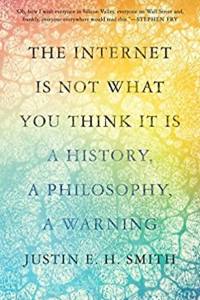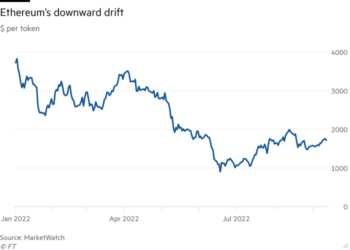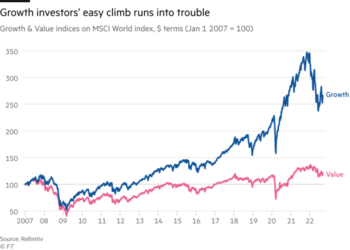When the DALL-E artificial intelligence system made its internet debut this year, it followed a long line of outlandish machines that have come to define our online world. The publicly available version of the program allows users to input a text description and output a surprisingly plausible computer-generated image.
DALL-E, developed by the research company OpenAI and trained on image data scraped from across the internet, was quickly appropriated as a meme factory, spawning mash-ups such as “CCTV videos of Julius Caesar’s assassination” and “Gordon Ramsay eating fibreglass insulation”.
DALL-E is the kind of technology whose antecedents can be found in the cabinet of proto-internet curiosities assembled by Justin EH Smith in The Internet Is Not What You Think It Is. With Kieron O’Hara and Wendy Hall’s Four Internets, it is one of two new books that offer compelling perspectives on the internet after the “tech lash” against powerful online platforms.
A historian and philosopher of science at the University of Paris, Smith traces the early internet through the outlandish ideas of Renaissance inventors, ill-fated fraudsters and forgotten polymaths. It’s a provocative reframing of the internet, a lament for what might have been, and a fresh way of thinking about what we’re doing when we spend endless hours scrolling online.
For Smith, the promise of an internet that could transform our world for the better was lost sometime around the Arab Spring. Instead, our experience of being online has become warped by heavy surveillance and well-tuned algorithms.
But Smith’s book moves beyond a critique of technology to consider some of the ancient preoccupations that frame it. From the “reasoning calculator” imagined more than 300 years ago by the philosopher Gottfried Wilhelm Leibniz — which is at the centre of Smith’s treatise — we learn about a lunar voyage conjured by a 2nd-century Greek writer, the way that Hollywood uses eye-tracking technology at test screenings, the significance of the punchcard loom, the way that spiders receive vibrations from the extremities of their webs, and a never completed Renaissance machine designed for gouty readers.
Ultimately, the book is less of a polemic than it is a demonstration that there is nothing inevitable about the way the internet has emerged. Smith avoids offering easy solutions to the current crisis but suggests that we might be able to reach back into the past in order to reorient the internet towards a more meaningful end.
If Smith deals with the internet’s genesis, Four Internets considers how it might evolve. O’Hara and Hall, academics at the University of Southampton, offer a compelling view of the internet as split into four competing models, each centred on a different place.
The oldest of these, the Silicon Valley Open Internet, has a utopian commitment to openness, decentralisation and bottom-up innovation. The DC Commercial model builds on this by welcoming corporate monopolies and advertising-driven monetisation of the web. The Brussels Bourgeois Internet, less content-agnostic than its US counterparts, uses regulation to protect user privacy, uphold human rights and curtail the influence of commercial entities. Finally the Beijing Paternal Internet emphasises social stability, state-driven commercial actors and surveillance, with a heavily restricted space for users.

Are these four internets in a fight to the death? O’Hara and Hall tread cautiously, arguing that the threat of a “splinternet” is unlikely to be realised any time soon. And in practice, the internet rarely fits one model neatly. China’s (relatively) closed-off internet borrows from the DC Commercial model, while EU regulation has influenced regulation in the US.
AI and its link to data gathering is a particularly fraught area, according to O’Hara and Hall. We may think DALL-E epitomises Silicon Valley’s accessible, permissionless vision of the internet, but questions of who will profit from the program (will it help design the ever-elusive metaverse, as some commentators have suggested?), biased data sets, and the potential for misuse swiftly arise.
Yet for all the internet’s flaws, and despite the likely emergence of new models for it over time, O’Hara and Hall sound a hopeful note. The openness that underpinned its origins and subsequent growth will continue to keep us connected, they think.
Smith is more pessimistic. “The present situation is intolerable, but there is also no going back,” he writes. Programs like DALL-E may be light entertainment for the moment, but they carry with them the potential to alter the way we see the world, make decisions, and understand ourselves. They will never be politically neutral.
Four Internets: Data, Geopolitics, and the Governance of Cyberspace by Kieron O’Hara and Wendy Hall, Oxford University Press £22.99, 344 pages
The Internet Is Not What You Think It Is: A History, A Philosophy, A Warning by Justin EH Smith, Princeton University Press £20, 256 pages
Join our online book group on Facebook at FT Books Café











